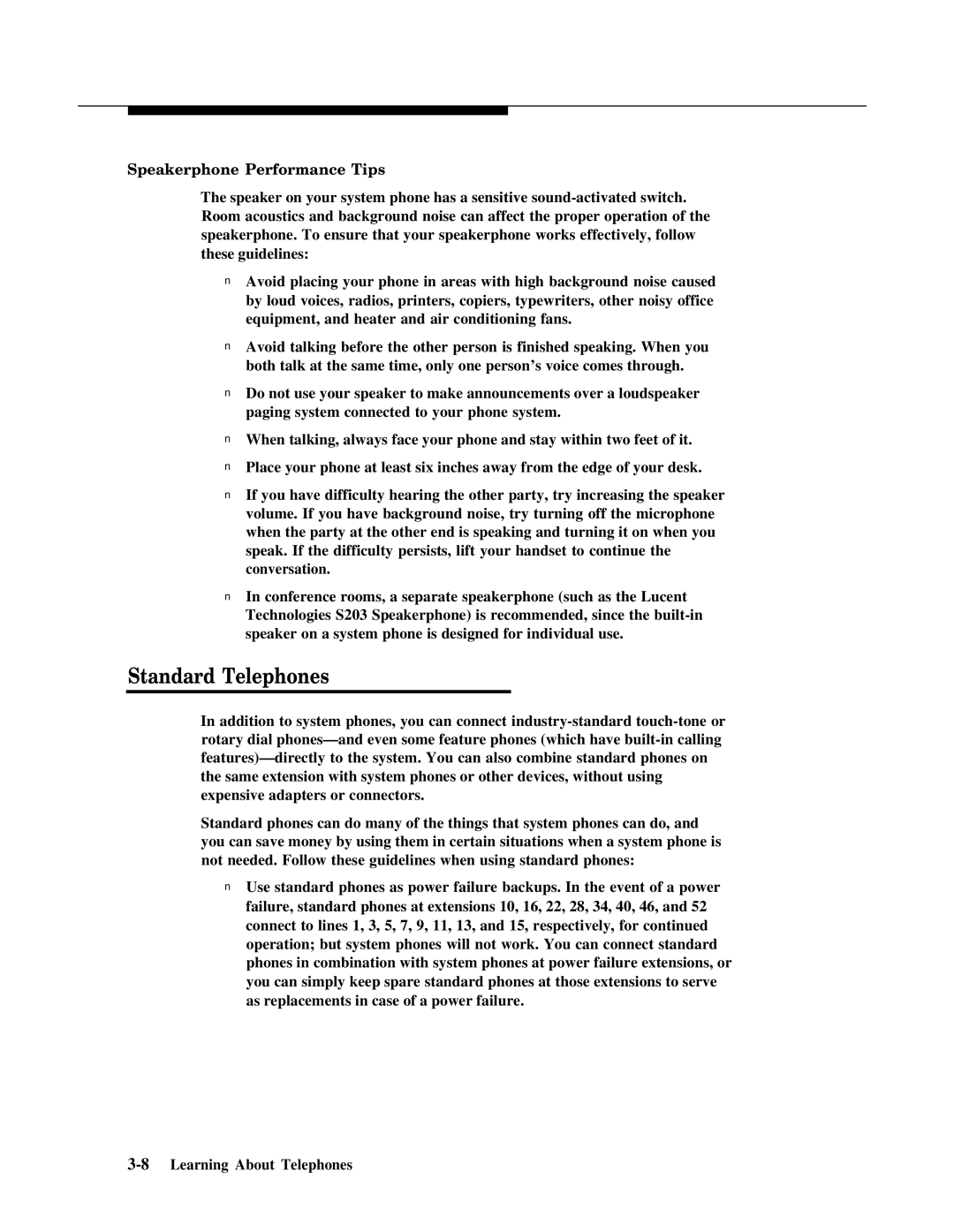
Speakerphone Performance Tips
The speaker on your system phone has a sensitive
■Avoid placing your phone in areas with high background noise caused by loud voices, radios, printers, copiers, typewriters, other noisy office equipment, and heater and air conditioning fans.
■Avoid talking before the other person is finished speaking. When you both talk at the same time, only one person’s voice comes through.
■Do not use your speaker to make announcements over a loudspeaker paging system connected to your phone system.
■When talking, always face your phone and stay within two feet of it.
■Place your phone at least six inches away from the edge of your desk.
■If you have difficulty hearing the other party, try increasing the speaker volume. If you have background noise, try turning off the microphone when the party at the other end is speaking and turning it on when you speak. If the difficulty persists, lift your handset to continue the conversation.
■In conference rooms, a separate speakerphone (such as the Lucent Technologies S203 Speakerphone) is recommended, since the
Standard Telephones
In addition to system phones, you can connect
Standard phones can do many of the things that system phones can do, and you can save money by using them in certain situations when a system phone is not needed. Follow these guidelines when using standard phones:
■Use standard phones as power failure backups. In the event of a power failure, standard phones at extensions 10, 16, 22, 28, 34, 40, 46, and 52 connect to lines 1, 3, 5, 7, 9, 11, 13, and 15, respectively, for continued operation; but system phones will not work. You can connect standard phones in combination with system phones at power failure extensions, or you can simply keep spare standard phones at those extensions to serve as replacements in case of a power failure.
